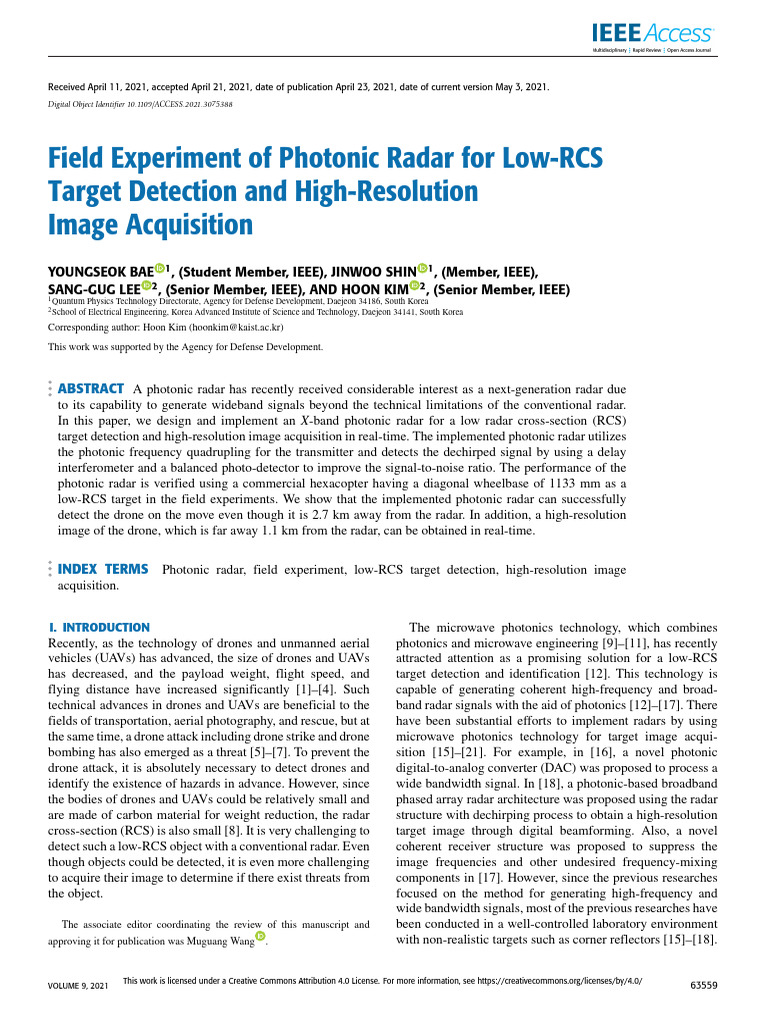In the ever-evolving landscape of modern warfare, the integration of cutting-edge technologies has become imperative. Amidst these advancements, photonic radar emerges as a transformative force, poised to redefine systems of detection and surveillance on the battlefield. This optical innovation not only promises precision but also enhances the capacity for tactical versatility, making it indispensable in contemporary military operations.
Photonic radar utilizes the principles of photonics—the science of generating and manipulating photons, particularly in the visible and near-infrared spectrum. Unlike traditional radar systems that send and receive electromagnetic waves in the radio frequency spectrum, photonic radar leverages light waves, which can offer significant advantages in terms of resolution and stealth. By employing laser-based methodologies, photonic radar can achieve a remarkable degree of accuracy while preserving the element of surprise.
One of the salient features of photonic radar is its enhanced resolution. With the ability to operate at higher frequencies, photonic systems can detect smaller objects at greater distances than conventional radar systems. This precision is critical in the detection of low-RCS (Radar Cross Section) targets, such as stealth aircraft or small drones, which pose formidable challenges due to their reduced visibility on traditional radar screens. Through high-resolution imaging and processing capabilities, photonic radar can effectively discern the nuances of the battlefield, providing military personnel with real-time intelligence that could pivot the outcome of engagements.
Moreover, photonic radar systems exhibit reduced susceptibility to jamming. Traditional radar signals can be easily disrupted through electronic countermeasures, leading to a breakdown in communication and reconnaissance capabilities. However, the coherent nature of photonic signals, combined with advanced signal processing algorithms, allows for enhanced resilience against such interference. Consequently, this technological superiority not only fortifies operational reliability but also ensures that vital data can be transmitted and interpreted without external disruptions.
In addition to these advantages, photonic radar systems can facilitate multifunctionality. Traditional systems often require separate installations for different types of detection tasks, ranging from air to ground or maritime surveillance. The versatility of photonic technology enables the integration of various functionalities into a single system. This modularity is a game-changer for military strategists; it streamlines logistics and reduces costs while simultaneously enhancing operational effectiveness. As a result, troops on the ground can rely on a singular, robust system for myriad engagements, leading to faster decision-making and increased adaptability.
Another noteworthy dimension of photonic radar is its potential for data fusion. The integration of photonic radar into existing command and control systems allows for seamless amalgamation with other data sources, including satellite imagery, GPS, and airborne surveillance networks. This synchronicity fosters a holistic view of the operational environment, augmenting situational awareness for troops on the ground and command centers alike. By creatively utilizing big data analytics, commanders can predict enemy movements and plan offensive or defensive strategies with unprecedented accuracy.
The future applications of photonic radar extend beyond mere battlefield reconnaissance. With ongoing advancements in machine learning algorithms and artificial intelligence, the capacity for autonomous decision-making is looming on the horizon. Imagine a scenario where unmanned aerial vehicles (UAVs), equipped with photonic radar, could autonomously patrol designated areas, identify threats, and report back— all without human intervention. Such capabilities could significantly enhance force multipliers, ensuring swift and precise actions in dynamic combat scenarios while mitigating risks to human life.
Furthermore, the procurement and deployment of photonic radar systems yield strategic implications that reach beyond technological superiority. Nations investing in this optical technology can acquire a geopolitical advantage, enabling them to maintain vigilance over territorial integrity and national security. As adversaries continually seek ways to breach defenses, possessing advanced detection capabilities can act as a deterrent. Nations that successfully advance their photonic radar capabilities will thus be better positioned to engage in global power dynamics.
Despite its promising prospects, the adoption of photonic radar within military applications is not without its challenges. Developing photonic systems that are both robust and adaptable to wartime conditions necessitates significant investment in research and development. Furthermore, considerations surrounding the miniaturization of components, the management of heat generated by laser systems, and ensuring reliability in various environmental conditions remain paramount. Overcoming these hurdles will be pivotal for militaries aiming to harness the full potential of photonic radar.
In conclusion, photonic radar represents a paradigm shift in military detection and surveillance technologies, offering a wealth of possibilities for enhanced operational effectiveness on the battlefield. Through its advanced capabilities in precision, resilience, multifunctionality, and data fusion, this optical innovation is not merely a tool of war; it is an essential asset that shapes the future of warfare dynamics. As militaries around the globe strive to remain at the forefront of technological advancements, the integration of photonic radar may very well become the defining characteristic of next-generation combat systems. In the quest for strategic advantage, the eyes of the future battlefield seem destined to be photonic.










